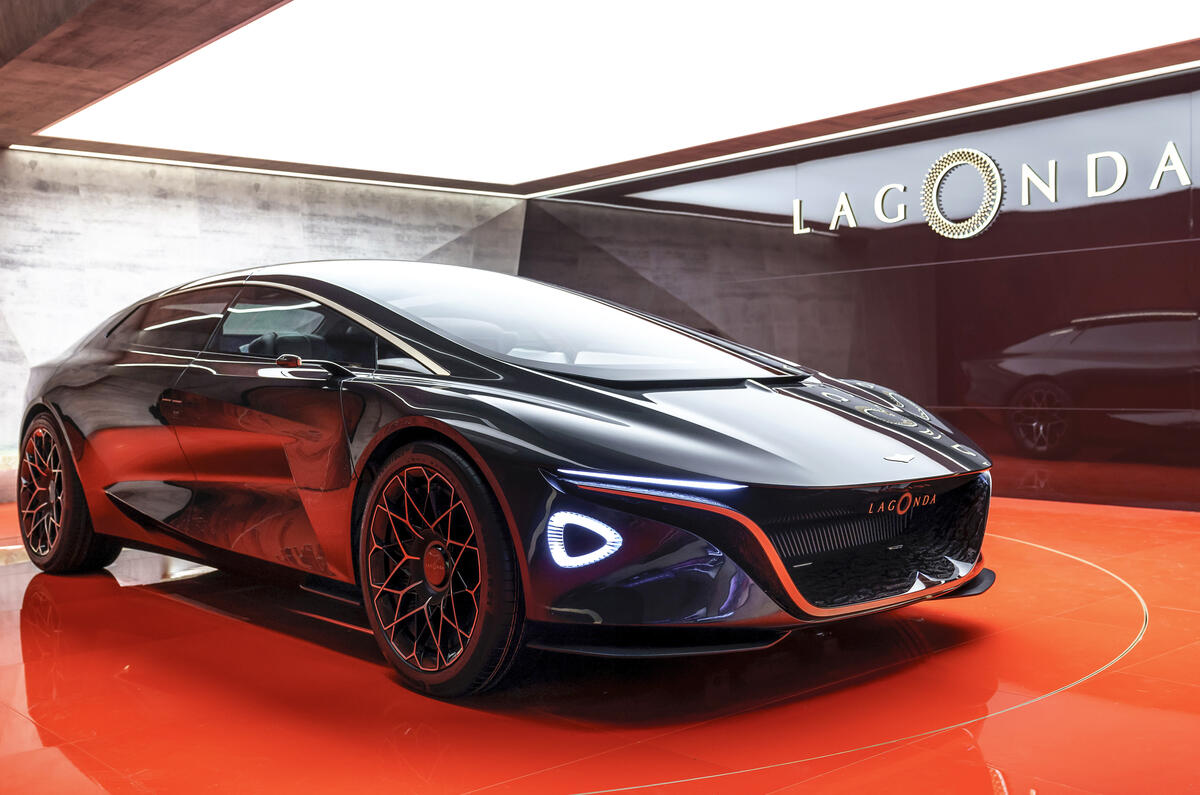There’s a certain audacity about Andy Palmer’s leadership of Aston Martin. The plan to float the company on the stock market comes on the back of a good year for profits — at least in terms of what Aston Martin has achieved before.
Also on the way are more Aston models, a revival of the Lagonda brand as the cutting edge of modern CO2-free luxury and the promise of overall annual sales heading towards 10,000 units in the medium term. But since at least the 1960s, Aston has been bouncing in and out of bankruptcy and there’s a peculiar rhythm to Aston’s troubles.
In the early 1970s, a recession, the fuel crisis and the inability of what was a very small company to produce engines that could meet very strict new Californian pollution regulations knocked the maker out cold.
After Aston was revived in 1975, the company launched the aggressively modern Lagonda saloon, best known for its failed attempt at a digital dashboard.
Today, a deal with (small shareholder) Daimler has fixed Aston’s need for cutting-edge engines and infotainment technology.
Aston Martin readies DBX SUV for 2019 launch
What’s proving harder to fix is the brand’s century-long inability to build a consistently performing business and Aston’s particular vulnerability to recessions.
For example, even though Ford’s takeover in 1988 finally provided the technical and financial muscle to produce the admired DB7, it took nearly a decade to build over 7000 examples of the car. The 2008 credit crunch recession also felled Aston. In 2007, it sold 7300 cars, but then sales collapsed. By 2013, it crept back to 4200 sales before crashing back to 3500 in 2014 and a £75 million loss.
What was most baffling about the 2008-2016 period was that Aston had never had a range of more competitive cars but it still failed to surf the massive rise in global ‘ultra-premium’ car sales that started in 2010.
The launch of the new-generation Aston Martin DB11 in 2016 was a huge help in the most recent revival. Full-year sales leapt 58% to 5117 in 2017 and the company made its first annual profit for a decade.
But if you compare Aston’s 2017 financial performance with that of Ferrari — which is listed on the stock market — its fundamental issues become more clear.
Aston made around €933m revenue on its 5117 car sales. Ferrari sold 8398 cars, but made €2.4 billion revenue. Crudely, Ferrari as a business pulls in around €286,000 in revenue per car sold and Aston just €182,333.
Ferrari is more than just car sales, too. It may well also sell the highest-profit-margin baseball caps on the planet. Its 2017 income from ‘sponsorship, commercial and brand’ was €494m. Ferrari even charged Maserati €373m for supplying engines.
So strong is Ferrari’s position that it has profit margins of 30% and says it will spend €550m in 2018 on capital expenditure alone.
Aston Martin’s financial position is far less solid and it is engaged in a massive product push that will make the next five years or so rather more complex than Ferrari’s next five years.
As well as a new factory and the new SUV, there’s the development of the battery-powered Lagonda ‘future luxury’ car and a new mid-engined model is also promised.
Between now and 2023, there will be another global recession. Future investors — who know the difference between a hard-headed business plan and an evening at the Casino Royale — must hope the company has not overstretched itself in terms of product development and that it has also broken its recessionary curse.
Read more
Aston Martin Vanquish review
2018 Aston Martin Vantage makes public debut in LA
Aston Martin DB11 AMR 2018 UK review




Join the debate
Add your comment
All this article tells us is
All this article tells us is that to grow successfully you need consistent funding, or you stay a minnow. The comparison in this thread with Amstrad and Apple is false.
How very British
... to find all the bad in Aston Martin’s recent past, suggest it will be such a hard struggle, and meanwhile glowingly ‘puff up’ a foreign competitor. This ‘willing it to fail’ attitude has become endemic in the British psyche since the 70’s and is surely helping to contribute to towards Brexit becoming the disaster it need not have been.
Brilliant analysis!
All this recent noise about Aston's share sales and how it aims to be the next Ferrari or the british Ferrari yada...yada....one would think the world has lost the plot. Therefore nice to read a pragmatic view on the whole thing.
Aston's announcement sounds like, if a company like Amstrad was flying the British flag in its endeavour to be the next Apple!
Aston is way off the game, wether it's barnd or product appeal.
Well,...